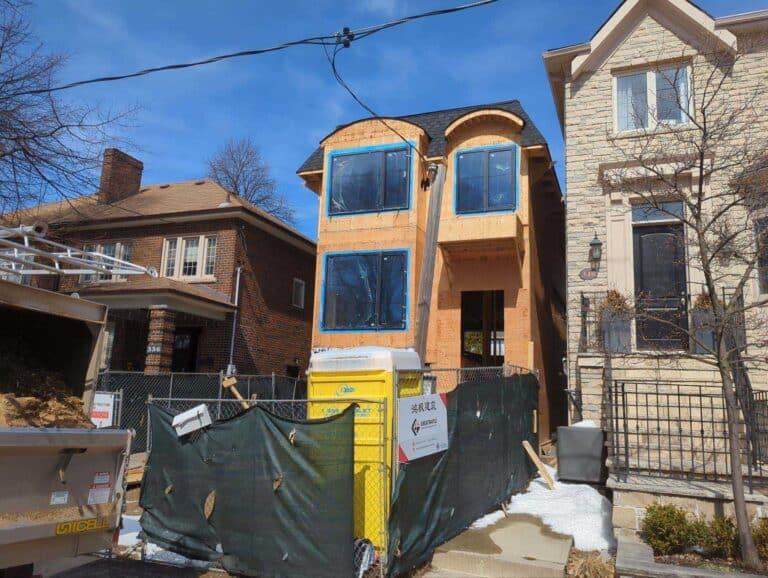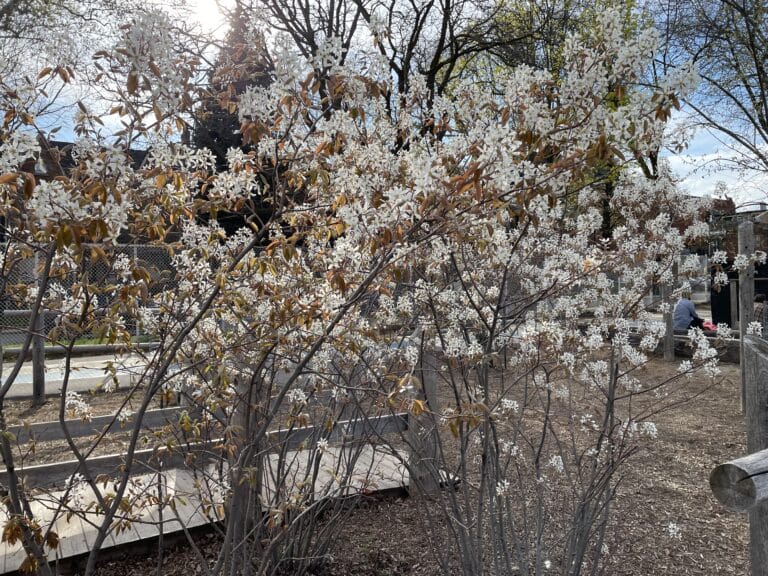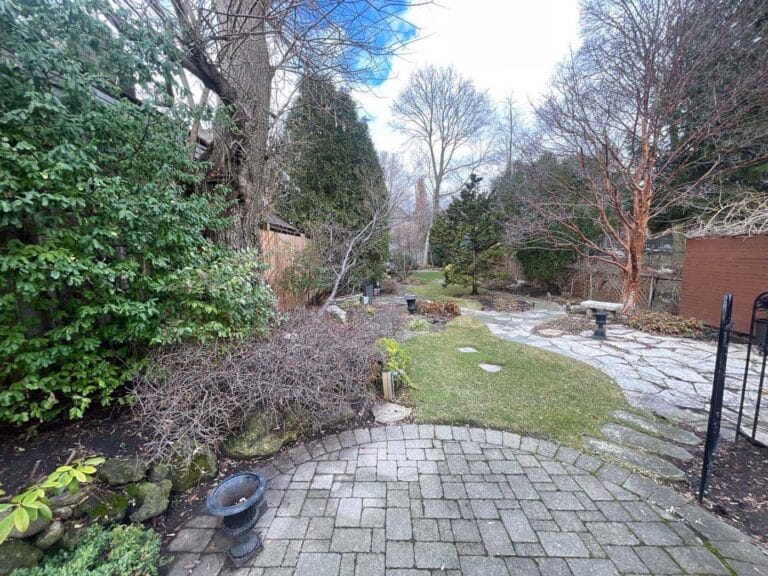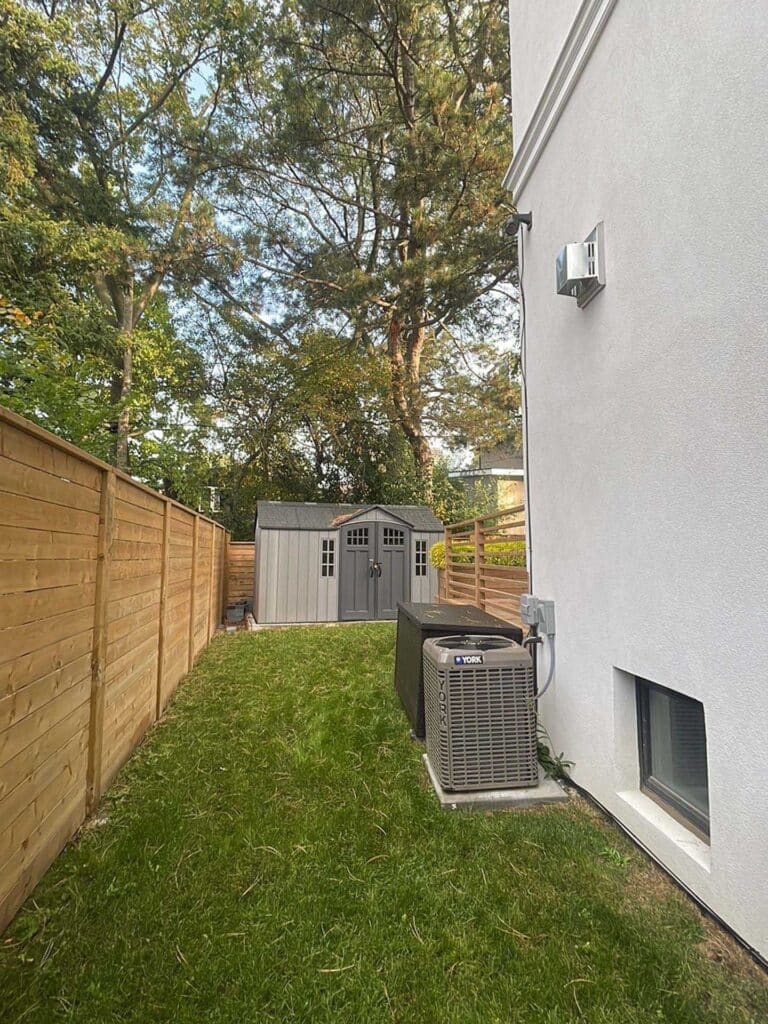Planning a home construction project? Don’t forget about construction tree protection in your plans. In Toronto and GTA communities, it’s a required part of the approval process for construction permits.
Careless work around trees during construction can badly damage a tree. This can lead to a tree’s decline, tree removal, and/or municipal fines, depending on the damage. It’s best to plan ahead to ensure you’ve followed city requirements and tree protection zone guidelines.
Tree Construction Permits
If you’re completing a renovation or new construction close to trees on your property, you’ll need to submit a Toronto Tree Protection Plan as part of your application for construction permits. An arborist report is required for this.
The tree protection plan should explain how any trees in the vicinity will be cared for during construction and how you plan to avoid damage to the trees. Keep in mind this isn’t only required if construction is very close to a tree. It’s also necessary if workers will be storing vehicles or equipment alongside your trees, discarding construction waste, or digging.
Arborist Reports for Construction
An arborist will look at how the planned construction will affect any trees in your yard. It’s especially important if there are large mature trees in the area where the construction is planned. These trees have larger root systems. Damage or removal can affect ecosystems and property values of your home, and potentially neighbouring homes.
The arborist report will assess which trees may be affected by your planned construction project. Your arborist can make recommendations for tree protection during construction, as well as consider whether the planned construction will leave your tree enough space to grow and thrive, and make suggestions for adjustments to your plans if necessary.
If your construction involves removing trees, you’ll need the arborist report to apply for tree removal permits as well. Toronto requires a permit to remove trees over 30 cm in diameter. Other GTA communities have different bylaws — Markham requires a permit for trees over 20 cm in diameter, for example, while Oakville requires a permit to remove any tree over 15 cm in diameter.
Tree Protection Zones (TPZ)
The size of a tree protection zone (TPZ) varies depending on the size of the tree. In Toronto, this ranges from a distance spanning 1.2m outwards from the tree, for a tree under 10cm in diameter, to a 6m radius for trees with a 91cm-1m diameter. That distance increases for trees in ravines.
In that area, you’re prohibited from altering the grade of the ground, filling or excavating material, storing construction materials, equipment or waste, disposing of liquids, and driving equipment or vehicles. The tree protection zone needs to be fenced off with plywood hoarding or another approved fencing material at a height of 1.2-2.4m (4-8 feet).
If it’s not possible to avoid the full required area, the city’s Urban Forestry department may make adjustments to the size of the TPZ in consultation with the arborist. An arborist may also need to advise on other work needed to protect the tree, including mulching, deadwood pruning, soil aeration, or removing branches likely to be affected by construction.
How Can Construction Affect Trees?
Trees can be affected during construction by heavy equipment being moved around the yard or stored against a tree, as well as damaged by accidents or careless operation of equipment. Bark can easily be skinned off trees by various types of construction equipment, causing damage to the tree and leaving it more vulnerable to disease and further damage. A physical barrier or fencing around trees can help protect them while your property undergoes outdoor renovations.
Improperly disposed chemicals and construction materials on lawns can also damage your trees and landscaping.
Root Protection
Protecting tree roots is one of the most important considerations in planning construction. Your tree roots likely extend much further than you think, especially for large and older trees. Tree roots extend outwards from the tree, but may only be up to 30 cm or 1 foot deep.
This is where your arborist can really help you out, examining where your tree’s root systems extend to, as well as the root systems of neighbours’ trees, in the case of construction close to property lines. You’ll want to ensure any digging doesn’t damage the root systems of trees. Roots need to be protected along with the trunks and canopies of trees.
Cut roots can gradually cause branches to die back in your tree and the tree to weaken over time. It’s also important to make sure your trees get enough water during construction, especially if the work is happening during hot and dry summer weather.
Your Renovation and Tree Safety
With the help of an arborist, it’s easy to ensure that your construction or renovation plans follow municipal bylaws and help keep your trees safe. Every homeowner who’s gone through a reno knows that lots can go wrong or off track during construction — don’t let your trees and yard be the victim!
If you need an arborist report for your construction plans, give Vista Tree a call. We’ll help you keep your trees healthy during your construction project!









